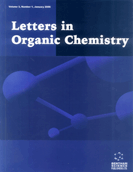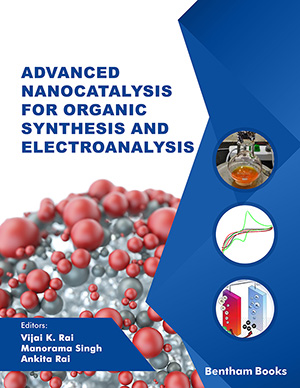Abstract
Nowadys, indoor air pollution is harming human health and has become a global problem. Therefore, research on indoor air pollution is necessary. This paper systematically reviews the research progress of indoor air pollution in recent years, mainly including indoor pollutant types and sources, indoor pollutant detection methods and equipment, pollutant release simulation models and quality standards, indoor air treatment technologies, and points out the problems that exist in current researches. Furthermore, it proposes the direction of future research work.
Keywords: Indoor air pollution, volatile organics, air purification, emission models, air quality, human health.
[http://dx.doi.org/10.1016/j.buildenv.2017.08.050]
[http://dx.doi.org/10.1016/j.tplants.2018.03.004] [PMID: 29681504]
[http://dx.doi.org/10.1016/j.scitotenv.2017.02.047] [PMID: 28215812]
[http://dx.doi.org/10.1016/j.proeng.2017.10.204]
[http://dx.doi.org/10.1016/j.buildenv.2017.05.033]
[http://dx.doi.org/10.1016/j.trac.2015.10.012]
[http://dx.doi.org/10.1016/j.scitotenv.2017.02.215] [PMID: 28319702]
[http://dx.doi.org/10.1016/j.resp.2014.10.001] [PMID: 25308706]
[http://dx.doi.org/10.1016/j.cca.2016.05.013] [PMID: 27221203]
[http://dx.doi.org/10.1016/j.buildenv.2017.06.038]
[http://dx.doi.org/10.1016/j.envint.2014.06.013] [PMID: 25016450]
[http://dx.doi.org/10.1016/j.yrtph.2011.01.013] [PMID: 21295098]
[http://dx.doi.org/10.1016/j.chemosphere.2018.02.161] [PMID: 29529574]
[http://dx.doi.org/10.1016/j.jhazmat.2015.09.048] [PMID: 26476306]
[http://dx.doi.org/10.1016/j.jhazmat.2014.01.042] [PMID: 24548885]
[http://dx.doi.org/10.1016/j.envres.2015.11.015] [PMID: 26618504]
[http://dx.doi.org/10.1016/j.scitotenv.2018.01.119] [PMID: 29353793]
[http://dx.doi.org/10.1016/j.buildenv.2018.04.011]
[http://dx.doi.org/10.1016/j.buildenv.2017.04.013]
[http://dx.doi.org/10.5094/APR.2014.016]
[http://dx.doi.org/10.1016/j.scitotenv.2016.10.071] [PMID: 27817926]
[PMID: 29681671]
[http://dx.doi.org/10.1016/j.envint.2018.01.007] [PMID: 29421410]
[http://dx.doi.org/10.1016/j.jhazmat.2007.04.033]
[http://dx.doi.org/10.1016/S0196-4399(00)88651-1]
[http://dx.doi.org/10.1016/j.proeng.2017.10.288]
[http://dx.doi.org/10.1016/j.proeng.2017.10.086]
[http://dx.doi.org/10.1016/j.proeng.2017.10.358]
[http://dx.doi.org/10.1016/j.jhazmat.2007.02.025] [PMID: 17376591]
[http://dx.doi.org/10.1016/j.chemosphere.2007.08.021] [PMID: 17889253]
[http://dx.doi.org/10.1016/j.atmosenv.2013.12.001]
[http://dx.doi.org/10.1007/s11356-015-4092-8] [PMID: 25601614]
[http://dx.doi.org/10.1016/j.scitotenv.2017.12.282] [PMID: 29996434]
[http://dx.doi.org/10.3390/ijerph15040744] [PMID: 29652814]
[http://dx.doi.org/10.1016/j.yrtph.2018.05.015] [PMID: 29857116]
[http://dx.doi.org/10.1080/10934529.2017.1356198]
[http://dx.doi.org/10.1016/j.atmosenv.2011.08.012]
[http://dx.doi.org/10.1016/S0160-4120(01)00046-0] [PMID: 11485228]
[http://dx.doi.org/10.1111/j.1600-0668.2005.00414.x] [PMID: 16683937]
[http://dx.doi.org/10.1016/j.atmosenv.2006.06.005]
[http://dx.doi.org/10.1021/es030544b] [PMID: 15212253]
[http://dx.doi.org/10.1016/j.eiar.2008.05.002]
[http://dx.doi.org/10.1080/08940630.1988.10466376] [PMID: 3379453]
[http://dx.doi.org/10.1080/00039899709602222] [PMID: 9541364]
[http://dx.doi.org/10.1016/j.envint.2014.03.029] [PMID: 24769411]
[http://dx.doi.org/10.1016/j.jhazmat.2014.11.024] [PMID: 25462869]
[http://dx.doi.org/10.1016/j.atmosenv.2014.11.020]
[http://dx.doi.org/10.1016/j.scitotenv.2015.05.123] [PMID: 26277440]
[http://dx.doi.org/10.1016/j.proeng.2015.08.1015]
[http://dx.doi.org/10.1016/j.atmosenv.2016.01.017]
[http://dx.doi.org/10.1016/j.envres.2017.10.001] [PMID: 29035784]
[http://dx.doi.org/10.1016/j.buildenv.2017.10.001]
[http://dx.doi.org/10.1016/j.atmosenv.2014.02.035]
[http://dx.doi.org/10.1016/j.resmic.2015.03.004] [PMID: 25869221]
[http://dx.doi.org/10.1016/j.proeng.2017.10.188]
[http://dx.doi.org/10.1016/j.apm.2016.10.030]
[http://dx.doi.org/10.1016/j.scitotenv.2013.11.118] [PMID: 24365517]
[http://dx.doi.org/10.1016/j.jhazmat.2014.07.065] [PMID: 25151239]
[http://dx.doi.org/10.1016/j.ecolmodel.2017.02.006]
[http://dx.doi.org/10.1016/j.jhazmat.2012.03.082] [PMID: 22521795]
[http://dx.doi.org/10.1016/j.atmosenv.2015.09.029]
[http://dx.doi.org/10.1016/j.psep.2016.06.013]
[http://dx.doi.org/10.1016/j.ijheatmasstransfer.2013.08.092]
[http://dx.doi.org/10.1080/1073161X.1993.10467134]
[http://dx.doi.org/10.1016/j.catcom.2012.04.033]
[http://dx.doi.org/10.1016/j.ijhydene.2018.02.158]
[http://dx.doi.org/10.1016/j.ijggc.2017.11.008]
[http://dx.doi.org/10.1016/j.scs.2017.04.011]
[http://dx.doi.org/10.1016/j.scitotenv.2017.11.097] [PMID: 29175617]
[http://dx.doi.org/10.1021/ie980657h]
[http://dx.doi.org/10.1021/ie970315w]
[http://dx.doi.org/10.1016/j.biotechadv.2008.03.005] [PMID: 18547770]
[http://dx.doi.org/10.1021/es950743y]
[http://dx.doi.org/10.1061/(ASCE)0733-9372(1997)123:6(530)]
[http://dx.doi.org/10.1080/10473289.2000.10464021] [PMID: 10734712]
[http://dx.doi.org/10.1016/j.apcatb.2010.05.011]
[http://dx.doi.org/10.1016/j.cattod.2011.04.015]
[http://dx.doi.org/10.1016/j.seppur.2006.09.003]
[http://dx.doi.org/10.1016/j.buildenv.2015.01.033]
[http://dx.doi.org/10.1016/j.apcatb.2016.10.037]
[http://dx.doi.org/10.1016/S1872-2067(15)61073-7]
[http://dx.doi.org/10.1016/j.apsusc.2017.02.010]
[http://dx.doi.org/10.1016/j.apcatb.2013.03.049]
 58
58 2
2

























